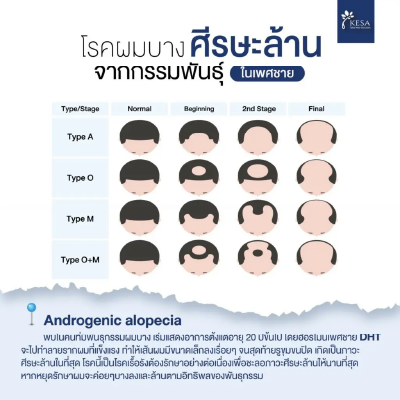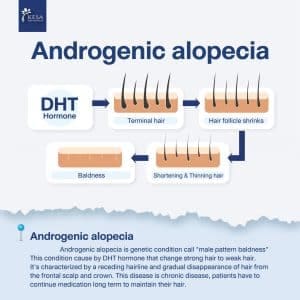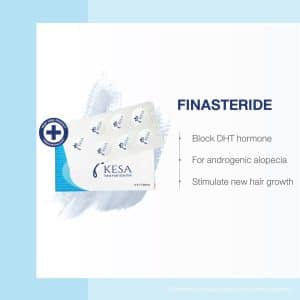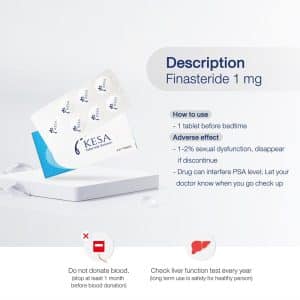What is Finasteride ?
Let’s talk about Finasteride. Hair loss is a common concern that affects countless individuals worldwide. One effective solution that has gained prominence is the use of finasteride. In this comprehensive guide, we’ll delve into the details of finasteride, its mechanisms, benefits, potential side effects, and its role in combating hair loss.

1. Understanding Finasteride
Finasteride is an FDA-approved medication primarily used to treat male pattern baldness (androgenic alopecia). It functions as a 5-alpha-reductase inhibitor, targeting the conversion of testosterone into dihydrotestosterone (DHT), a hormone implicated in hair loss.
Read more : Androgenic alopecia
2. Mechanism of Action
By reducing DHT levels, finasteride helps protect hair follicles from the damaging effects of this hormone. This preservation promotes hair growth and slows down the progression of hair loss.

3. Benefits of Finasteride
Finasteride offers several benefits, including stimulating hair regrowth, increasing hair thickness, and potentially reversing the miniaturization process commonly seen in androgenetic alopecia.

4. Consultation and Prescription
Before starting finasteride, it’s essential to consult a healthcare professional. A doctor will assess your suitability, discuss potential risks, and determine the appropriate dosage.
5. Proper Usage and Results
Consistency is key when using finasteride. Daily intake of the prescribed dosage over an extended period is necessary to observe visible results. Results may become noticeable after several months of use.
6. Potential Side Effects
While finasteride is generally well-tolerated, some individuals may experience side effects. These can include changes in sexual function, but such effects are rare and often reversible upon discontinuing the medication.

7. Managing Expectations
It’s crucial to have realistic expectations when using finasteride. Individual responses vary, and while many experience positive results, it’s important to understand that hair growth may be gradual and might not result in a complete reversal of hair loss.
8. Combining Therapies
Some individuals opt for a combination of therapies for enhanced results. Combining finasteride with topical minoxidil, for example, can provide a comprehensive approach to addressing hair loss.
Conclusion
Finasteride is a valuable tool in the fight against hair loss, offering the potential for hair regrowth and thicker, healthier hair. Before embarking on this treatment, consult a healthcare professional for personalized guidance. By understanding its mechanisms, benefits, and potential side effects, you can make an informed decision about incorporating finasteride into your hair loss management regimen. Remember, achieving optimal results requires consistency, patience, and a comprehensive approach to hair care.
